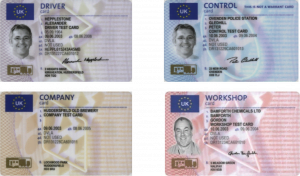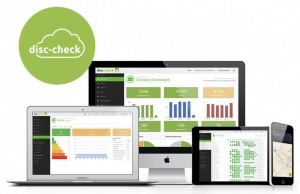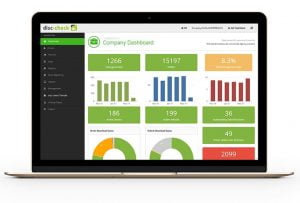Perhaps you’re just starting on a new venture, you could already be working in the transport industry, or you’re already a qualified transport manager and looking to transition to an external transport manager. Wherever you are on your career journey, please read on to find out, How to Become an External Transport Manager.
Most Small/Medium Enterprise (SME) operators don’t need to employ the services of a full-time transport manager. They therefore can opt to use a part-time/freelance external transport manager. This is where you come in, but if not already, you will first need to get qualified.
Step 1. Getting Qualified
To become an external transport manager you will first need to obtain a Transport Manager Certificate of Professional Competence (CPC) otherwise known as the Transport Manager CPC or TM CPC. It’s suitable for those wishing to enter the profession of HGV or PCV transport management to demonstrate professional competence to meet Operator Licensing requirements.
The Transport Manager CPC qualification is offered on behalf of the Department for Transport and is assessed at Level 3 competence of the National Qualification Framework.
The type of Transport Manager Certificate of Professional Competence (CPC) exam you need to take depends on which sector you want to work in:
- Road Haulage – For goods vehicle operators, HGV or van companies
- Road Passenger Transport – For public service vehicle operators, bus or coach companies
You need to take an exam approved by one of the following organisations:
- Chartered Institute of Logistics and Transport (CILT)
- City & Guilds
- Innovate Awarding
- National Logistics Training Consortium (NLTC)
- NOCN Group
- Skills and Education Group (SEG) Awards
Consider whether you will be working with operators running national and/or international operations. You will need to take an extra exam for international transport management.
Pop Transport Manager CPC into a search engine and find a training provider near you. Most offer options for distance learning, online, tutor-led and classroom courses.
Step 2. Getting ETM work
It is possible to become an external transport manager when just starting. Your options may be a little limited though, if you have little or no experience. There are, however, a few things you can do that will help tip the odds in your favour.
Get help/support
If you’re signed up with a company offering an ETMs finder service, you could ask them if you can come back to them, should you need some advice or guidance. You can also ask around, the Transport Manager Community are a friendly bunch and we’re always helping each other out. There are a few web forums out there, Facebook has a number of groups you can join to connect with other TMs
Be on top of your game
With sound knowledge and comprehensive understanding you can hit the ground running. If it’s a new operator, you could have your policies and processes documents ready to implement from the outset. Demonstrate you have a plan, so the operator knows they are in safe hands.
Aim for new SME (Small/Medium Enterprise) operators, running 1 to 5 vehicles. Starting with a new operator is great because you can grow together. My first job was with an owner-operator with one vehicle, he is now running a fleet of 50 vehicles and we are still working together.
ETM Finder services
There are companies (such as ourselves) that help operators gain their O’Licence and therefore are always on the lookout for external transport managers. Feel free to join our ETM database. If work comes in your area, we’ll be in touch!
New Operators
When you get work with a new operator, you will be expected to help set up their systems including policies/processes, tachograph hardware/software, and generally, guide them during the application process. We’ll have a look at systems in another post/video. Just remember that external transport managers are expected to provide the same level of expert compliance services as a full-time transport manager.
Restricted Licence Holders
You could consider offering your services to Restricted Licence holders. Restricted licence holders don’t need to employ the services of a professionally competent person, they have to sit OLAT but that’s it! However, restricted operators are required to comply with the same legislation as Standard Licence holders. I always advise Restricted Licence holders to ensure they at the very least, have access to professional advice. This can be in the form of a retainer service.
How many operators can I work for?
You can only work for 4 operators and a maximum of 50 vehicles. However, your application (via the operator’s application) will be at the Traffic Commissioner’s discretion. The factors considered include, how far and how long it will take you to travel to the operators’ premises, how many vehicles you will be managing, what work you will be carrying out, whether you have any assistance, what tasks the assistant will be assigned, the days and hours you will be working and what other work you do.
How much can I charge as an external transport manager?
The standard rates for an external transport manager are around £450.00 for the first vehicle plus £100.00 per vehicle after that. This system is based on the amount vehicles the operator has been granted on their licence, or the ‘margin’ as it’s called. So, if an operator has a five-vehicle margin, you could charge £850.00 per month, for example.
You can also charge more depending on the operator’s OCRS score. OCRS indicates the level of risk you will be managing. Therefore, you should consider the extra work and headspace required for the task ahead. It’s also worth noting you will need to take into account personalities. Every operator is different, however, an operator with a red OCRS score could indicate a resistance to compliance in general. If this is the case, you must be firm, resolute and confident with the systems you put into place. Have a look at my rates page here to get an idea of how much extra you should be charging for amber or red operators.
When can I start to charge my fee?
I often get asked by new operators if they can start paying the ETM from the point they put their first vehicle on the road. The simple answer to this question is no. Start to charge your fee as soon as the online TM1 form has been sent for approval and the contract has been signed. Once the TM1 form is in application, it has taken up one of your four permitted operator slots. Make sure the start date on your contract reflects this.
The Contract
You will need a comprehensive contract that covers:
- Appointment/Termination
- Duties
- Fees, invoicing, and expenses
- Confidentiality
- Delivery up documents
- Tax liabilities and indemnity
- No employment
- Data protection
- Force majeure
- Survival of causes of action
- Severability
- Waiver
- Notices
- Law and jurisdiction
It is always advisable to seek the assistance of a solicitor with all things legal. However, you can purchase and download a template copy of an External Transport Manager’s Contract here.
Considerations
There are some important things to keep in mind before making your application to the OTC. An ETM can only work for, up to four operators, managing a total of 50 vehicles.
Also, factors like, the total amount of vehicles you’ll be managing, the distance you’ll be travelling, whether you have on-site assistance and the tasks assigned to the assistant. Number of days and hours you work, and other work commitments will influence how much you’ll be permitted to take on.
Step 3. Transport Compliance Systems
Handbooks
As an External Transport Manager, ensure you are armed with all the documentation necessary to stay compliant. Policies and processes usually come in the form of handbooks. One for the operator and one for drivers and staff. They provide a framework within which an operator operates. They define what the transport department does and how you manage it. Clear policies and procedures support effective decision-making and delegation because they provide guidelines on what operators, drivers and staff can and cannot do, what decisions they can make, and what activities are appropriate.
Management tools
You will need to have tools in place to manage and record all required data. The easiest way to do this is to grab a spreadsheet and create tabs for each area of management required to be recorded. Such as:
- Operator information
- Vehicle maintenance planner
- Driver information
- Training Matrix
- Incidents log
- Complaints
- Roadside stops
- Fuel usage for example
There are compliance management software systems you can use but in all honesty, I have found them to be a little over-complicated for the SME operator.
You can use various compliance pack templates on the market. They should include but not be limited to:
- Policies and procedures
- Forms and stationery
- Risk assessments
- Declarations
- Management tools
Feel free to have a look at our Transport Manager’s Compliance Template Pack which is both HGV and PCV friendly.
Tachograph analysis
You must ensure you have a means to collect and analyse driver card and vehicle unit (VU) data. You can either go directly to a tachograph analysis software company or sign up to a bureau. A bureau adds a level of extra personal service to the analysis process. Hardware-wise, you will need a download tool. More about tachograph analysis here.
Step 4. Add extra value to your offering
You can add value and earn extra income by becoming a Driver CPC Trainer. There are a few options open to you
You can learn more about how to become a Driver CPC trainer here.
Other opportunities
Other opportunities you can consider to make an extra buck are:
- Compliance auditing services
- Tachograph analysis services
- FORS auditing
- Restricted licence holder retainer services
- Public Inquiry services
If you have any thoughts on other possible opportunities, I’d like to hear them!
Keep up to date, keep learning
Becoming an external transport manager can be a challenging yet rewarding career choice. It does require a wealth of knowledge but you can strengthen your position by staying up-to-date and, with most professions, continuous professional development is a key aspect of career development.
Keep up to date by signing up to trade publications. DVSA’s online publication ‘Moving On’ is the ticket for compliance updates. Feel free to join our newsletter too!
Need Help?
If you need any advice about how to become an external transport manager, please get in touch. We’re here to share the knowledge!






















